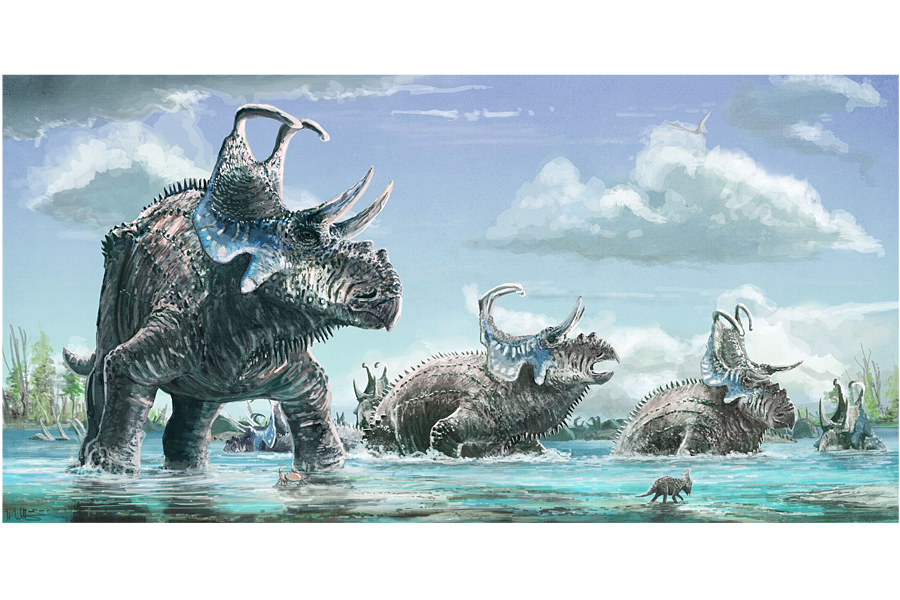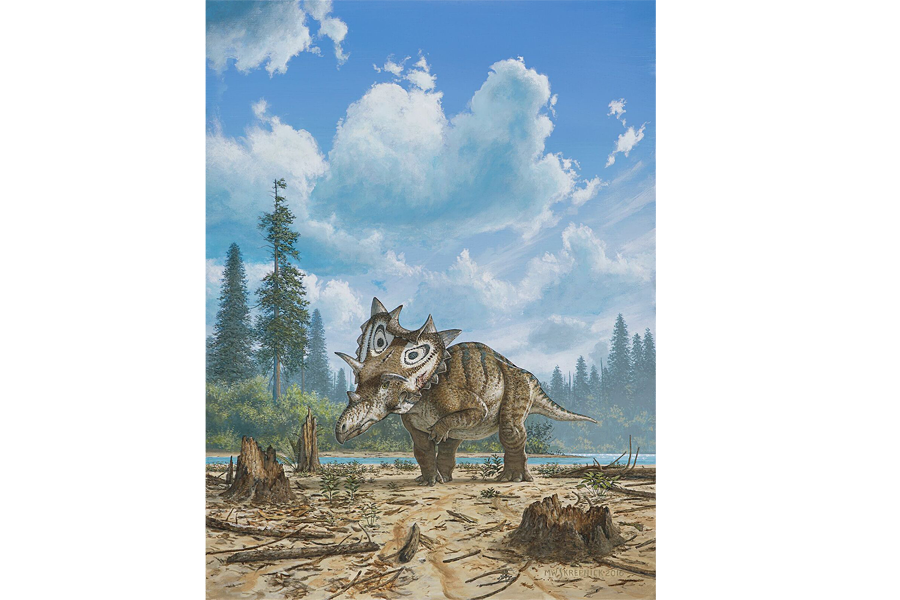Two new species of horned dinosaur discovered. Why the dino diversity?
Loading...
There are two new dinosaurs in town, both sporting horns and spiky shields.
Scientists announce the discovery of two new species that were older relatives of Triceratops in papers published Wednesday in the journal PLOS ONE. And these new dinosaurs add more detail to the picture of dinosaur diversity close to the end of their reign.
Machairoceratops cronusi, discovered in Utah, and Spiclypeus shipporum, unearthed in Montana, are members of two different subfamilies of the group Ceratopsia, a group of horn-faced herbivorous dinosaurs that lived during the Cretaceous Period.
Both new species were hefty animals with parrot-like beaks and various spikes sticking up from their skulls and massive shields at the back of their heads.
Taken together, these animals fill out a picture of dinosaur diversity in North America some 75 million to 77 million years ago.
"Evolution just went crazy with these horned dinosaurs in the last phase of the dinosaur era," Paul Sereno, a paleontologist at the University of Chicago who is not connected to either new find, tells The Christian Science Monitor in an e-mail.
The two new dinosaurs may both be members of the same family, but they're not actually very closely related.
The family Ceratopsia is made up of two main lineages, Centrosaurines and Chasmosaurines, the lineage that yielded the iconic Triceratops. Machairoceratops is a Centrosaurine and Spiclypeus is a Chasmosaurine.
Machairoceratops, which lived about 77 million years ago, sits relatively early along the Centrosaurine lineage, says study lead author Eric Lund, a PhD student at Ohio University Heritage College of Osteopathic Medicine. "So it gives us insight into the early evolution of Centrosaurines."
Spiclypeus, which lived around 76 million years ago, may be a Triceratops relative, but the iconic dinosaur came much later. "It's on the line that ultimately leads to Triceratops," says Jordan Mallon, lead author of the paper on Spiclypeus.
Patterns of diversity
"As we start to put together the record of dinosaurs in North America 75 million years ago, or thereabouts, you get very localized patterns of species," Dr. Mallon tells the Monitor in a phone interview. "The species that you find in, say, Alberta, tend to be different from the ones you find in Montana, which tend to be different from the ones you find further south. So we think these dinosaurs occupied sort of different provinces."
Just what's creating these local communities of dinosaur diversity is still a debate, he says, but it could have something to do with the way the region looked at the time.
Sea levels were much higher during this period than they are today. As a result, the middle of North America was flooded and a shallow interior seaway sliced through the center of the continent. North America was divided into Laramidia to the west and Appalachia to the east.
These new dinosaurs were part of the diverse fauna roaming Laramidia.
Perhaps the rise and fall of the interior seaway led to endemism, with distinct species in the separate habitats that created.
Another explanation for the immense diversity of these horned dinosaurs being uncovered in North America could be that "these species only last a few million years, contrary to common perception," Dr. Sereno says. "Go to older or younger beds and you will find new taxa."







